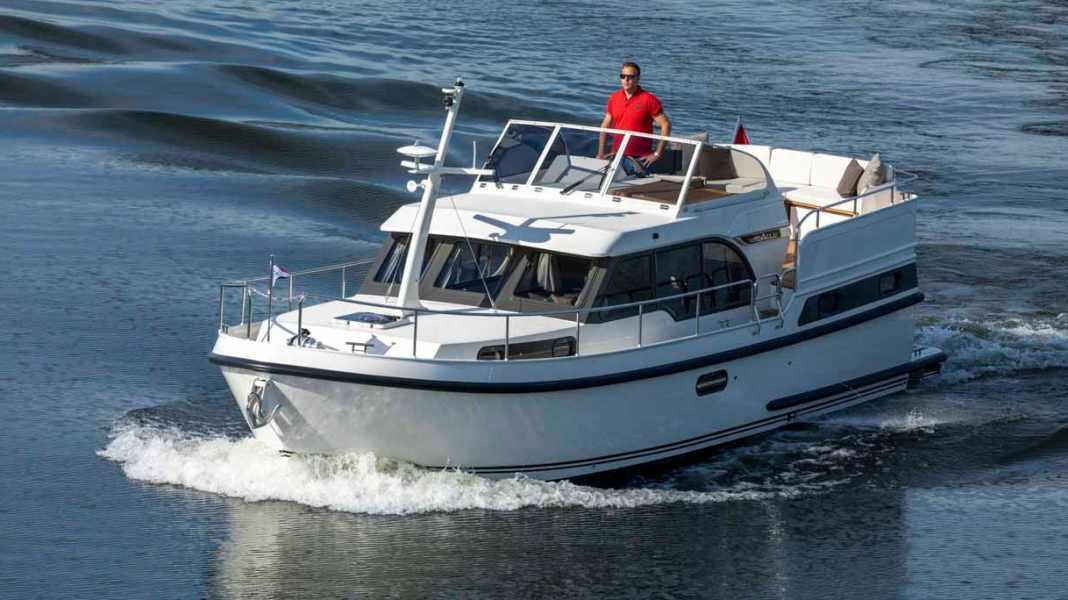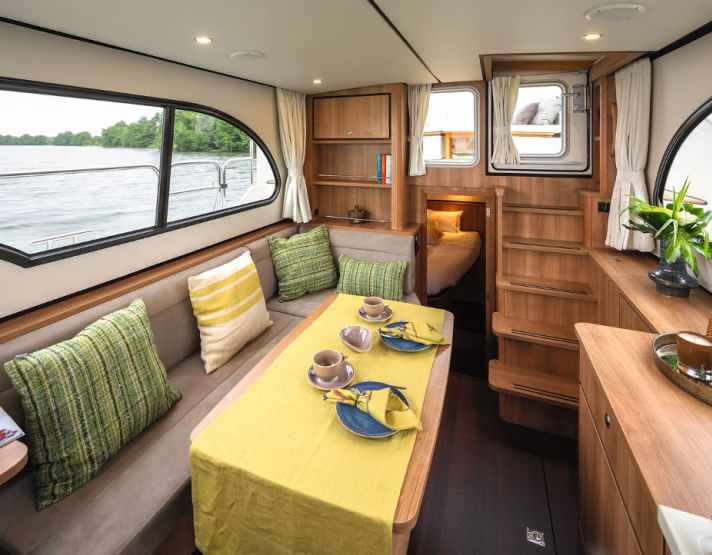
Of course people like to revive old models. Especially if they were particularly successful. In its 1981 chronicle, Linssen writes: "The successful SL series, designed by Jos Linssen, helped Linssen Yachts achieve its international breakthrough." What worked well back then is now to be continued with the new SL series. Again in the original Linssen quote:

"One of the hallmarks of the new SL line is the rising waterline, which follows the curves of the bow and thus radiates compactness and modernity. The window section of the superstructure is in dark, contrasting shades of grey, making the boat unmistakable. The icing on the cake is the robust rubber bumper moulding. In addition to the standard white hull, we also offer you the option of a unique colour scheme in shades of green, blue or grey."
Need more information? The test of the Linssen 35 SL AC with all technical data, further measurement results and full assessment can be found in BOOTE issue 8/2020 ( available here ).
After Linssen first launched the SL-30 models, the boats in the 35-foot class are now following. Our test boat is the 35 SL AC. This boat is based on the Grand Sturdy 35 series that most people are familiar with. At the front, our test boat has a cabin with a double berth. The mattress lies perfectly on a slatted frame, which ensures ventilation and back comfort. Steps at the side of the footwell make it easier to climb into the berth. The toilet room and shower are separate and can be accessed from the cabin.
The WC can also be used as a day toilet from the anteroom. There is also a second door for the shower from the vestibule for an extra charge. We also recommend this if you do not order an optional
if you have not ordered an optional complete wet room. A toilet room with washbasin was installed on our boat - but no shower. This means that the entire crew always has to go through the forward cabin to shower.

In the standard version, there is a huge storage space in the aft cabin instead of the care area. The bunk also impresses with its slatted frame and suitable size. If more guests arrive, they can be accommodated in the convertible saloon seating area with the so-called Easy Sleep Convert System.
Of course, such a carpool also needs to be catered for, which is why there is a galley with a three-burner gas hob (with glass cover plate), stainless steel sink, fridge and storage facilities on the port side. Particularly practical: drawers with glass holders and corresponding six-place storage as well as a bottle cabinet.
The cockpit is accessed from the saloon via a staircase with a wooden handrail. The cockpit is also well equipped for bad weather with a convertible top. Up here there is a split rear bench, the centre section of which has to be opened to access the bathing platform. The table version is freely selectable, as is the driver's seat. We had a free-standing Linssen model with a logo and good upholstery. Seated drivers have a good view even in the rain, as windscreen wipers clean the folding windscreen in no time at all. The view of the Raymarine displays and control unit is unrestricted.

The rev counter and ICCESS control panel are mounted horizontally and are best read standing up. The large steering wheel and the hydraulic steering system make it easy to steer the Linssen on course. From around 2500 rpm at just under 7 knots, the stern shaft accelerates considerably up to a maximum speed of a good 7.5 knots. The noise level is a maximum of 67 dB/A at the helm and can certainly be described as quiet.
When cruising at 6 knots, the noise level is a good 60 dB/A and a full tank of fuel minus 15% reserve will take you about 200 nm, which is already a decent range. At slow displacement speed, the range is more than doubled.
Fast manoeuvres are easy to perform without rattling locker contents or sliding objects, as the HPH hull only leans slightly on the outside of the bend. Of course, the Linssen can also perform slow manoeuvres, assisted by a bow thruster as standard. If you want to be on the safe side, you can also order the stern thruster installed on our test boat.
To access the engine, you have to push the saloon table to the side beforehand and can then open the hatch (with gas pressure dampers) in the saloon floor. The service technician has plenty of room to work in the engine compartment. The technicians install the lines and accessories in proper Linssen style. The same applies to the steel and furniture work.
To ensure safety on deck, the shipyard has fitted plenty of handrails and a sturdy railing. It almost goes without saying that the floor is non-slip. A passageway in the railing with a chain makes it easier to board from the jetty. If you would like a ladder, you will find it on the accessories list. There is also a range of packages, for example under "Instruments & Navigation". All-round protection made of thick rubber moulding, which can really take a knock, comes as standard.

